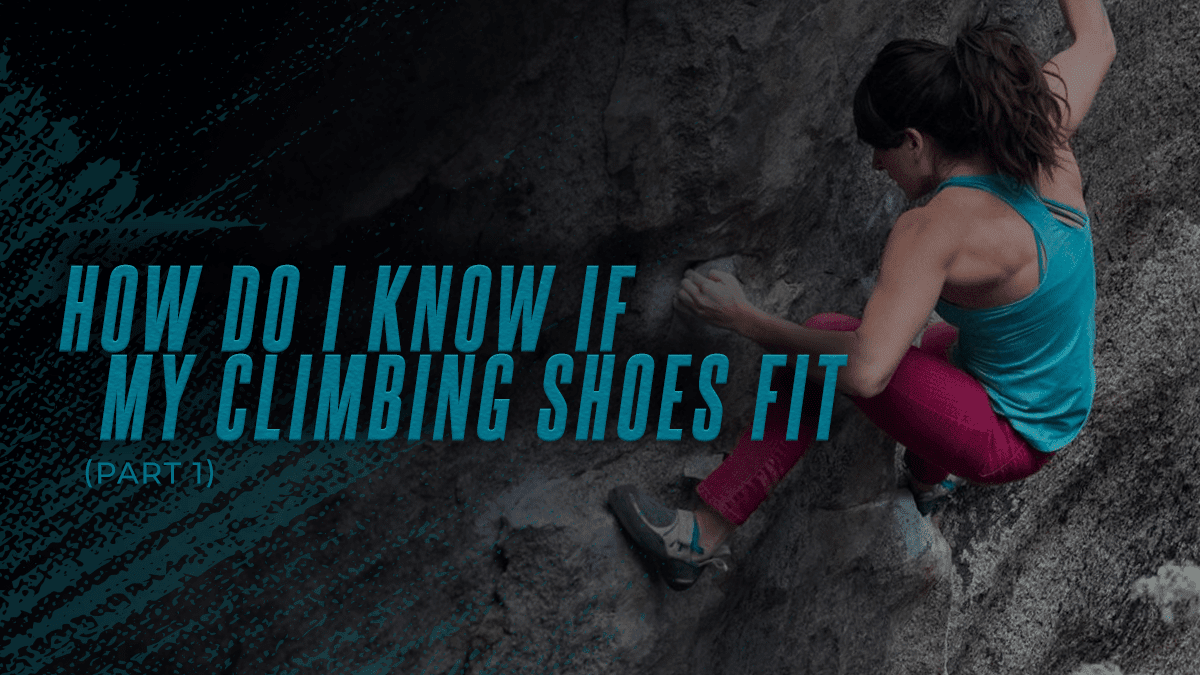How do I know if my climbing shoes fit? – The Basics (Pt.1)

Whether you are an experienced rock climber or are picking out your first pair of climbing shoes, it’s important that you understand what it means to have properly fitted shoes. You may hear rules-of-thumb tossed around gear shops and climbing gyms like, “They should be tight, but they shouldn’t hurt,” or “Don’t worry, they’ll stretch,” or “You just have to break them in!” But with all of the available shoes on the market these days, the trick is finding a shoe that fits your feet specifically. What type of climbing are you going to be doing? How often? How aggressively? And how high are your arches? How wide are your feet? All of these aspects play key roles in finding shoes that are perfect for you. So how should climbing shoes fit?
Climbing Shoe Materials
For the purposes of this article, we are going to talk about two types of climbing shoe uppers: leather and synthetic. Traditionally, climbing shoes are made from leather and specialized rubber. The leather allows for a tight, comfortable, flexible shoe, while the specially designed climbing rubber feels “sticky,” creating more friction and making it easier for you to stay on the wall. Down the line, climbing shoe companies developed shoes that utilize synthetic leather which makes up a sizable portion of the market today. It’s important to understand the difference between the two and how they affect the fit of the shoe before making a decision.
Leather
Leather shoes will stretch. As you sweat and your feet press out on the leather, these shoes can stretch up to full size! However, leather provides a more custom fit and is generally considered to be softer and more comfortable than synthetic materials. As leather shoe stretch, they mold to your feet, placing your feet closer to the wall. One of the main advantages of climbing shoes over everyday street shoes when rock climbing is how the snug fit places our feet as close as possible to the rock. The closer our feet are to the rock, the easier we can feel footholds and pull with our toes.
Synthetic
Different types of synthetic leather will have different amounts of stretch, but overall, synthetic shoes stretch far less than leather shoes. Synthetic shoes are not only a vegan option for climbers, but the fit at the time you purchase them will likely resemble the fit throughout their lifespan. Synthetic shoes will also stretch much less when exposed to water, so they may be a better option for climbers that like to keep their shoes washed and are the preferred material for deep water soloing.
At the end of the day, the leather versus synthetic shoe debate comes down to preference. Understanding the benefits of the different materials used in climbing shoe uppers can help determine your sizing when purchasing shoes, and may help you narrow down your choices.
Laces, velcro, and slip-on
Finally, let’s talk about how the three different closures for shoes affect the fit. Laces are going to give you much more customizability. You can pull the laces tighter or looser to compliment the contour of your foot with ease, but lace-on shoes can be a pain to take on and off repeatedly during a climbing session and also sacrifice the rubber on the top of the foot that may be helpful to climb more difficult roofs. Velcro straps provide a less customized fit the fewer straps a shoe has. Popular single-strap models allow you to cinch the shoe shut at the ankle, but do little to influence the overall fit of the shoe while three-strap models give you a bit more control over the arch and toebox fit. Slip-ons are rarely a good choice for a first shoe. They are often used as speed-climbing, all-day, or warm-up shoes. They can also be an incredibly comfortable option for climbers who are less concerned with having a snug fit.
Remember these climbing shoe basics the next time you are in the market for new shoes. Knowing the difference between climbing shoe materials and closures will help you select a shoe that will not only feel better when climbing but will last longer. If you are interested in the down-and-dirty details of how climbing shoes should fit each individual part of your foot, as well as more information on properly fitted climbing shoes, check out part two of this blog!




